Are There Barriers Separating the Pink River Dolphin Populations (Inia boliviensis, Iniidae, Cetacea) within the Mamoré-Iténez River Basins (Bolivia)? An Analysis of Its Genetic Structure by Means of Mitochondrial and Nuclear DNA Markers
- PMID: 39202372
- PMCID: PMC11353456
- DOI: 10.3390/genes15081012
Are There Barriers Separating the Pink River Dolphin Populations (Inia boliviensis, Iniidae, Cetacea) within the Mamoré-Iténez River Basins (Bolivia)? An Analysis of Its Genetic Structure by Means of Mitochondrial and Nuclear DNA Markers
Abstract
The pink river dolphin, or bufeo, is one of the dolphins which lives in the rivers of the Orinoco and Amazon basins in South America. The Bolivian bufeo population is considered a differentiated species (Inia boliviensis) from the Amazon and Orinoco species (Inia geoffrensis). Until now, no study has completed an extensive population genetics analysis of the bufeo in Bolivian rivers. We analyzed 82 bufeos from different rivers from the Mamoré and Iténez (Guaporé) river basins for the mt control region (CR), nuclear microsatellites, and DQB-1 gene sequences to determine if the inner rapids of these Bolivian river basins have some influence on the genetic structure of this species. The first relevant result was that the genetic diversity for CR, and the microsatellites were substantially lower in the Bolivian bufeos than in the dolphins studied in other areas of the Amazon and Orinoco. However, the DQB-1 gene sequences yielded similar genetic diversity to those found in other areas. The second relevant result is the existence of some significant genetic heterogeneity among the bufeo populations within Bolivia, although in a small degree, but this differentiation is independent of the inner rapids of the Bolivian rivers we sampled. The third relevant result was the existence of significant isolation by distance for the CR, but not for microsatellites and DQB-1 gene sequences. This was related to differential gene flow capacity of females (philopatric) and males (less philopatric and more migrants) and, possibly, to different selective patterns affecting the molecular markers studied. The fourth relevant result was related to diverse demographic changes of these bufeos. At least two or three bottleneck events and one or two population expansions have occurred in the Bolivian bufeo population. The major part of these events occurred during the Pleistocene.
Keywords: DQB-1 gene sequences; Inia boliviensis; Pleistocene; South American climatic and geological changes; microsatellites; mitochondrial control region; rapids; spatial patterns.
Conflict of interest statement
The authors declare no conflict of interest.
Figures

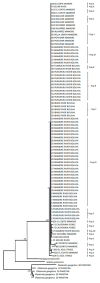
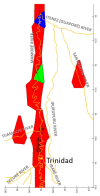



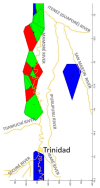


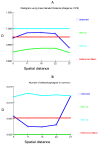





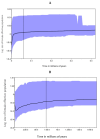
Similar articles
-
Molecular identification of evolutionarily significant units in the Amazon River dolphin Inia sp. (Cetacea: Iniidae).J Hered. 2002 Sep-Oct;93(5):312-22. doi: 10.1093/jhered/93.5.312. J Hered. 2002. PMID: 12547919
-
First report of major histocompatibility complex class II loci from the Amazon pink river dolphin (genus Inia).Genet Mol Res. 2006 Jul 31;5(3):421-31. Genet Mol Res. 2006. PMID: 17117356
-
Bolivian River Dolphin trends: A long-term analysis in the Mamore basin.PLoS One. 2024 Oct 4;19(10):e0308806. doi: 10.1371/journal.pone.0308806. eCollection 2024. PLoS One. 2024. PMID: 39365787 Free PMC article.
-
Mercury in Populations of River Dolphins of the Amazon and Orinoco Basins.Ecohealth. 2019 Dec;16(4):743-758. doi: 10.1007/s10393-019-01451-1. Epub 2019 Nov 12. Ecohealth. 2019. PMID: 31712931
-
Red-headed Amazon River Turtles in Venezuela and Colombia: population separation and connection along the famous route of Alexander von Humboldt.Zoology (Jena). 2018 Oct;130:67-78. doi: 10.1016/j.zool.2018.07.004. Epub 2018 Jul 17. Zoology (Jena). 2018. PMID: 30502841
Cited by
-
Mitochondrial genome of a Bolivian River Dolphin (Inia boliviensis).Mitochondrial DNA B Resour. 2025 Aug 11;10(9):804-808. doi: 10.1080/23802359.2025.2544682. eCollection 2025. Mitochondrial DNA B Resour. 2025. PMID: 40800634 Free PMC article.
References
-
- Pilleri G., Gihr M. Observations on the Bolivian (Inia boliviensis d′Orbigny, 1834) and the Amazonian bufeo (Inia geoffrensis de Blainville, 1817) with a description of a new subspecies (Inia geoffrensis humboldtiana) Investig. Cetacea. 1977;8:11–76.
-
- Da Silva V.M.F. Ph.D. Thesis. University of Cambridge; Cambridge, UK: 1994. Aspects of the Biology of the Amazonian Dolphins Genus Inia and Sotalia fluviatilis.
-
- Ruíz-García M. Changes in the demographic trends of pink river dolphins (Inia) at the microgeographical level in Peruvian and Bolivian rivers and within the Upper Amazon: Microsatellites and mtDNA analyses and insights into Inia’s origin. In: Ruíz-García M., Shostell J.M., editors. Biology, Evolution and Conservation of River Dolphins within South America and Asia: Unknown Dolphins in Danger. Nova Science Publisher; New York, NY, USA: 2010. pp. 161–192.
-
- Ruiz-García M. Micro-geographical genetic structure of Inia geoffrensis at the Napo-Curaray River basin by means of Chesser’s models. In: Ruíz-García M., Shostell J.M., editors. Biology, Evolution and Conservation of River Dolphins within South America and Asia: Unknown Dolphins in Danger. Nova Science Publisher; New York, NY, USA: 2010. pp. 131–160.
MeSH terms
Substances
Grants and funding
LinkOut - more resources
Full Text Sources

